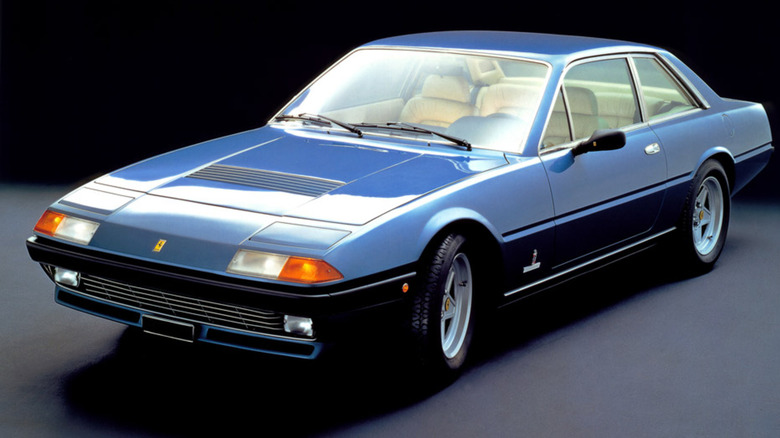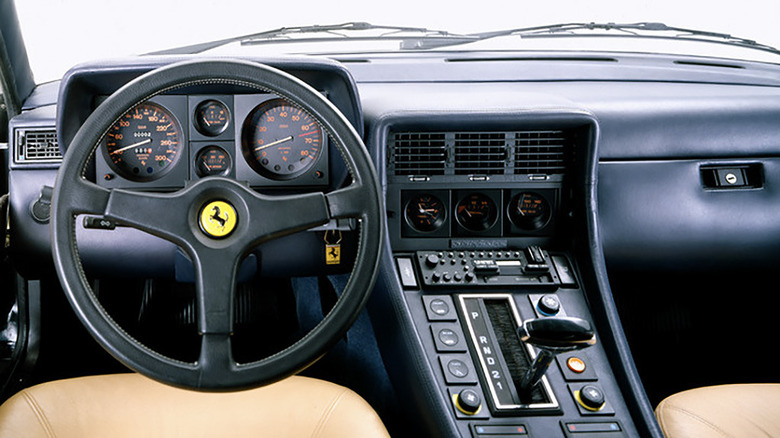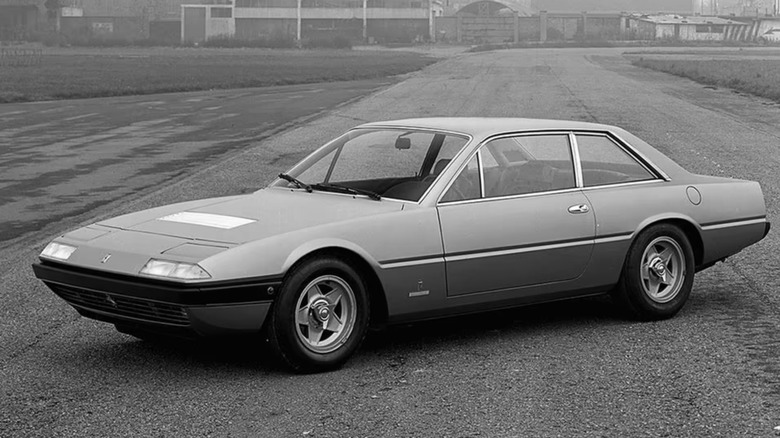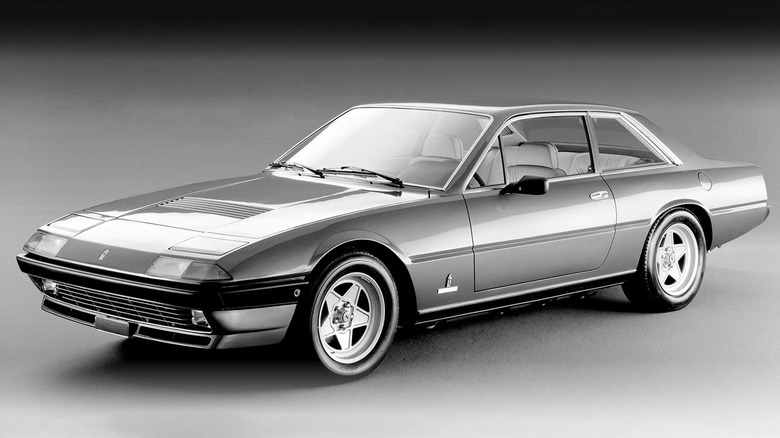Here's Why The 400 Is Considered One Of Ferrari's Worst Cars (But Shouldn't Be)
Looking back at the 1972–1989 Ferrari front-engined two-door four-seater grand tourer, which was called the 365 GT4 2+2, the 400, and later the 412, it's not at all clear why it's still considered one of the brand's worst models. It is a unique, more family-oriented V12 Ferrari designed to cover large swathes of the continent. It was one of the longest-running model lines in the company's history, and its typical 1980s design has aged well.
It wasn't perfect by the standards of its time, being criticized for its somewhat subdued styling, its lower performance compared to other Ferrari models, as well as its more comfort-oriented road manners and less sharp handling. Another issue was that the vehicle was launched around the 1970s oil crisis, which made fuel expensive and further diminished the car's market appeal.
Its big V12 engine, which grew from 4.4 to 4.9 liters throughout production, wasn't too good on fuel, and this was further penalized by the three-speed automatic you could select as an option back in the day. The V12's efficiency was improved when its carburetors were replaced by fuel injection, but this change didn't add any power, so it did little to change the car's image.
But even if it wasn't a big hit in its day, Ferrari still built almost 3,000 of these big Pininfarina-designed coupes over the 17 years it was in production, and it's become quite a sought-after classic today. The clean design, V12 engine, four usable seats, and more relaxed nature attract collectors today since it's considered an unusual Ferrari. It was replaced by the 456, another underrated Ferrari, and its equivalent today is the GTC4Lusso.
Performance
Even though all vehicles in this series had the Colombo V12 engine (one of Ferrari's best engines) under the hood, they were never as quick as other Ferrari models of the era. The 4.4-liter V12 in early 365 GT4 2+2 cars made 340 horsepower at 6,200 rpm or around 77 horsepower per liter.
In 1976, Ferrari updated and rebranded the model and gave it a bigger displacement version of the V12, stroked to 4.8 liters. But it produced the same 340 horsepower as before, or around 70 hp per liter. Being a luxurious long-distance cruiser, the car needed an automatic gearbox, which was added with this update in the form of a General Motors-sourced three-speed transmission.
Ferrari gave the car fuel injection instead of carburetors in 1979 and renamed the model the 400i. The transmissions remained the same five-speed manual and three-speed automatic for this version. The final iteration of the car, the 412, was introduced in 1985, and its fuel-injected engine grew in displacement to over 4.9 liters. But power remained the same at 340 horsepower, so the engine dropped below 70 hp per liter.
Since all these different engines didn't produce any more power, the car's performance never changed while it was still in production. Ferrari said the 412 could accelerate to 62 mph (100 km/h) in 6.7 seconds for the manual and 8.3 seconds for the automatic, and it could do the standing quarter-mile in 14.6 and 15.2 seconds, respectively.
The top speed for the 412 manual was 155 mph (250 km/h) and dropped slightly to 152 mph (245 km/h) for the automatic. These numbers are probably almost identical for older versions of the model.
Model evolution
As the first version's name implied, the 400 was a 2+2 coupe, which meant it was a two-door model that could seat four. It measured 189.3 inches (4,810 mm) in length and sat on a 106.3-inch (2,700 mm) wheelbase, so it was a big car, which was a requirement to help the vehicle feel comfortable and relaxed on a long journey. Thanks to the long wheelbase and rear self-leveling suspension, comfort levels were very good, and the car fulfilled its purpose of being a long-legged, luxurious cruiser.
Its tubular steel chassis was an evolution of the one that underpinned the 1971 to 1972 Ferrari GTC/4, but it was lengthened, and the 400's three-box body looks nothing like that of its much swoopier predecessor. It wasn't an especially heavy car, although its weight did increase from around 1.5 tons dry for the 365 GT4 2+2 to 1.8 tons by the time the last version, the 412, arrived.
Even though the car doesn't appear to have changed significantly on the outside, each generation of the model brought subtle exterior changes. It's inside where the differences between the generations are more obvious, although even here, the basic layout of the interior remained almost unchanged throughout the production run. The switchgear was updated, as were the instrument cluster and the steering wheel, but by the time the car went out of production, it was beginning to look dated.
Classic status
Even though none of the variants of the 400 model line were huge hits in their day, this wasn't because they were not good cars. The problem was Ferrari's timing to launch the model, right when fuel was so expensive that owning a big, powerful, and luxurious car didn't make you popular in the sea of affordable economy cars that were flooding the market at the time.
However, today, these cars are receiving a lot of love, and it shows in their high prices. There's no stigma attached to owning a big two-door GT cruiser these days, and since this one is an understated Ferrari four-seater with a Daytona-inspired nose and a V12 under the hood, it's not hard to understand why you might be shocked to find how much prices for them have gone up, especially if the last time you looked was 20 years ago when they weren't that desirable.
Prices probably also went up because this is a genuinely usable and fairly dependable V12 coupe. This isn't the kind of car you would buy purely as an investment or to bolster your collection. You can do that, and many people take that approach, but it's also remarkably good to drive and a very special experience for any car enthusiast.
This is one car that has shaken off its image of being an undesirable Ferrari, and today, it's considered cool. Its coolness is appreciating, though, along with its value, so if you want to get behind the wheel of one, you should try to buy one before the prices hit the stratosphere (which is a distinct possibility with old Ferraris, even ones that aren't especially rare).



